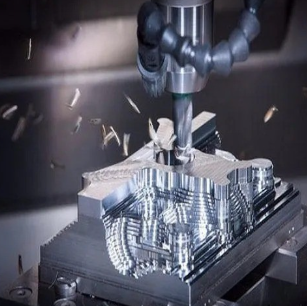
Metal sheet fabrication is a fundamental process used to craft durable and precise components for various industries. From automotive to aerospace, metal sheet fabrication plays a crucial role in constructing reliable and efficient parts tailored to specific applications.
What is Metal Sheet Fabrication?
This process involves shaping thin metal sheets through cutting, bending, and assembling to create functional parts. Advanced machinery and skilled techniques allow manufacturers to transform raw metal sheets into intricate and high-performance components.
Core Metal Sheet Fabrication Techniques
1. Cutting Methods
- Laser Cutting: Delivers precise, clean cuts with minimal material waste.
- Water Jet Cutting: Uses high-pressure water mixed with abrasives for sharp edges.
- Plasma Cutting: Utilizes ionized gas to cut through thick metal sheets quickly.
2. Bending & Forming
- Press brakes and roll forming machines help create precise angles and curves.
3. Welding & Assembly
- Techniques such as TIG and MIG welding ensure strong and durable joints.
- Alternative fastening methods like riveting and bolting are used for non-welded assemblies.
Advantages of Metal Sheet Fabrication
✔ High Durability: Fabricated metal components can withstand harsh conditions.
✔ Versatile Designs: Enables the production of custom and intricate parts.
✔ Cost-Effective: Optimizes material use, reducing waste and production costs.
✔ Scalable Production: Suitable for both prototypes and large-scale manufacturing.
Industries Utilizing Metal Sheet Fabrication
1. Automotive Sector
- Essential for producing car frames, engine components, and exhaust systems.
2. Aerospace & Defense
- Used in manufacturing aircraft structures, support brackets, and enclosures.
3. Construction & Architecture
- Common in roofing, staircases, wall panels, and industrial frameworks.
4. Industrial Equipment Manufacturing
- Fabrication aids in making machine housings, conveyor systems, and protective casings.
Challenges in Metal Sheet Fabrication
- Material Complexity: Some metals require advanced tools for processing.
- Precision Requirements: Small miscalculations can affect the final assembly.
- Production Costs: High-tech equipment like laser cutters require significant investment.
Future of Metal Sheet Fabrication
The industry is rapidly advancing with automation, CNC machining, and AI-powered manufacturing, making production faster and more cost-effective. The introduction of sustainable materials is also paving the way for eco-friendly fabrication solutions.
Conclusion
Metal sheet fabrication remains a vital process in industrial manufacturing, offering unmatched precision, strength, and design versatility. As technology evolves, fabrication techniques will continue to enhance efficiency, enabling industries to meet growing demands for high-quality metal components.
For an in-depth understanding of metal sheet fabrication, explore this detailed guide.




Leave a Reply